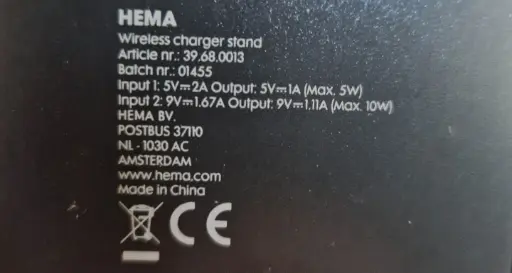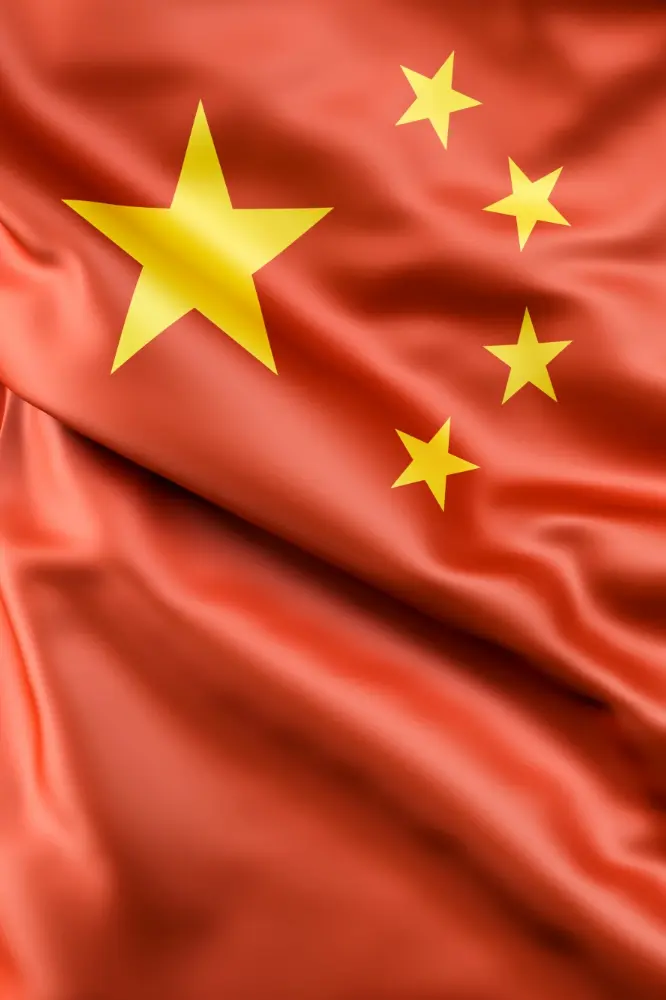In everyday life, the label "Made in PRC" often raises questions. What does this label mean and how does it differ from "Made in China"? This is an important question for importers sourcing from China and Taiwan. In this blog we take a closer look at the meaning of these labels and their impact on imports from these regions.
Meaning of Made in PRC
The “Made in PRC” label, which stands for the People's Republic of China, identifies products manufactured in mainland China. This label is often used as a synonym for "Made in China", but is sometimes chosen for specific reasons.

Example: A wireless charger from HEMA with the statement "Made in China"
"Made in PRC" vs. "Made in China"
Although both labels basically mean the same thing, the choice of one or the other label can have several reasons:
- Regulations and Labeling: In some markets, specific regulations may apply that require the full country name on imported products.
- Market perception: “Made in PRC” can sometimes be used to avoid certain associations with “Made in China” products, although this is not always the case. Consumers are not always familiar with the abbreviation PRC, but they are familiar with China.
Which country: China or Taiwan? What is the difference?
There is sometimes confusion as to whether "Made in PRC" refers to China or Taiwan. It is important to understand that "Made in PRC" always refers to Mainland China, while products from Taiwan would be labeled as "Made in Taiwan". Both the People's Republic of China (PRC) and the Republic of China (Taiwan) claim the name China, but it is common practice that when talking about China, the People's Republic is meant. For the Republic of China, "Made in Taiwan" is used.
Is it mandatory to mention "Made in China" or "Made in PRC"?
Within the EU, mentioning the country of origin ('Made in …') on many products or their direct packaging is not always mandatory, except for certain categories such as foodstuffs and cosmetics imported from outside the EU. However, it becomes mandatory when the presentation of the product evokes associations with a country other than the actual country of origin. Think of "Italian marble" when in reality it comes from China.
The specific rules for determining the country of origin, such as 'wholly obtained' and 'last substantial processing', are laid down in EU Regulations 2913/92 and 2454/93.
In the United States, it is mandatory to indicate the origin on the product.
Read also:

Importing from China: A Starter's Guide
With its vast production capacity, wide range of industries and favorable prices, China remains one of the most attractive markets for sourcing. This article is intended to guide companies in sourcing efficiently and successfully in China.
The impact on importing from China
For importers importing products from China, it is important to understand the difference and meaning of these labels:
- Customs Regulations: Make sure you are familiar with the labeling rules in your country to avoid customs issues.
- Consumer Confidence: Understanding how consumers interpret these labels can help make informed decisions about product purchasing and branding.
Conclusion
The distinction between "Made in PRC" and "Made in China" is subtle but important in the context of international trade. It is important for importers from China to understand the nuances of this labeling, both for customs regulation and consumer perception.
Do you need help with importing from China?
Westwood Sourcing offers specialist support and expertise to make your import from India successful and efficient. Contact us today for more information!









